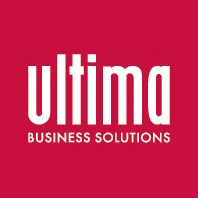As consumerisation continues to penetrate the workplace, organisations of all sizes are being forced to review the ways in which they provide IT services to their end users. Traditionally, IT has always been driven by the business and controlled by the IT department - PCs are locked down to ensure users only have access to the specific tools deemed necessary to do their job - and IT hold the master key.
However, modern working practices have turned the organisational chart on its head, empowering the end user and embracing their wide-ranging requirements as priority initiatives. This is partly driven by a new, tech-savvy workforce where consumer devices, collaborative working practices and publicly available, non-corporate applications are becoming, not only commonplace, but essential for productivity. This has led to the term “Shadow IT” - an unmanaged set of applications, access methods, devices and working practices - which have evolved through end users discovering workarounds for restrictive corporate IT policies.
Companies are being forced to embrace consumer devices, which are permeating the workplace at a rapid pace. This in turn is driving the need for cloud-based solutions to secure and manage these devices, whilst users are mobile - away from the protected four walls of the office. Increased mobility amongst laptop users, and enterprise-ready tablet devices such as Surface Pros, are compounding the need for better control and increased security to avoid accidental, or even intentional, data loss.
An Evolving Strategy
These significant changes in the workplace, alongside rapid technical innovations, have created a constantly shifting landscape of corporate and personal IT systems. Where previously organisations could produce detailed technical strategies that spanned three to five years, this disruption has led to much shorter prescriptive approaches, which utilise solutions that realise specific, short-term benefits. This not only ensures the business is constantly evolving, while justifying benefits against the spend, but also instils agility to take advantage of innovative technologies and trends.
As smaller projects and strategies are implemented in shorter cycles with incremental value, IT teams will inevitably focus on short-term deliverables and benefits over long-term strategic goals. Aligning smaller projects with a long-term workspace strategy for example, ensures a holistic approach to end user computing with cohesive IT solutions being offered to users.
To achieve this, the target operating model should be defined with key long-term strategic goals to align smaller, more agile projects to - these can include the adoption of one or more technologies. Following the implementation of each phased project, an informed review ensures the business benefits were realised and provides a platform to look forward to the next phase, considering industry trends and technical advances to provide the most contemporary and cost-effective solution.
Modern WorkSpace
Ultima’s Modern WorkSpace services are designed to modernise your end user computing environment, providing users with secure and collaborative access to resources and information - regardless of device type, connection and location.
- Digital WorkSpace – One of three focus areas, Digital WorkSpace brings together best-of-breed technologies to provide you with a workspace that embraces modern working practices. With Microsoft Windows 10 and Office 365 at its core, Digital WorkSpace ushers in a contemporary, collaborative and highly secure environment for your end users, encouraging a more productive and flexible workforce.
- Virtual WorkSpaces with Citrix Cloud – Leveraging the power of the cloud, Virtual WorkSpaces simplifies the adoption of Citrix-based desktops and applications by offloading maintenance of the core infrastructure to Citrix Cloud services. This not only enables internal IT resources to focus on the important tasks in hand, such as workload hosts, but also opens the door to cloud-hosted applications and desktops in the future.
- Microsoft WorkSpace Security – With the introduction of mobility and cloud-based solutions, protecting our assets, detecting threats and responding to breaches has become a key focus for many organisations. Microsoft WorkSpace Security seeks to address these challenges leveraging a range of solutions to protect your environment without preventing your user productivity.
Ultima’s Modern WorkSpace services encompass the above, and much more. We want to enable you to strategically optimise, consolidate, modernise - and expand - or more effectively support your end user computing environment.
- By Amyn Jaffer (Solutions Architect)





